The Benefits of Having Multiple Domains
Usability
One of the main benefits of having multiple domain names is that it gives me multiple points of entry: this can be useful if, for example, I want different domains leading to differently themed sites for different marketing campaigns or user experiences.
Cost Saving
Another benefit that I can take advantage of is the ability to have more than one domain running on a single Cloudjiffy environment. For example, I can have two different applications with two different domains running on a single Tomcat instance.
(Note:- In order to use a domain name for my application, I need to register it or have administrative access to it. )
1.Log into the Cloudjiffy Manager.
2. While in Cloudjiffy dashboard, click the Create environment button:
3.In the Environment Topology dialog, pick my application server (for example, Tomcat 7), switch on Public IPv4 for my server and type my environment name, for example, multi-binding.
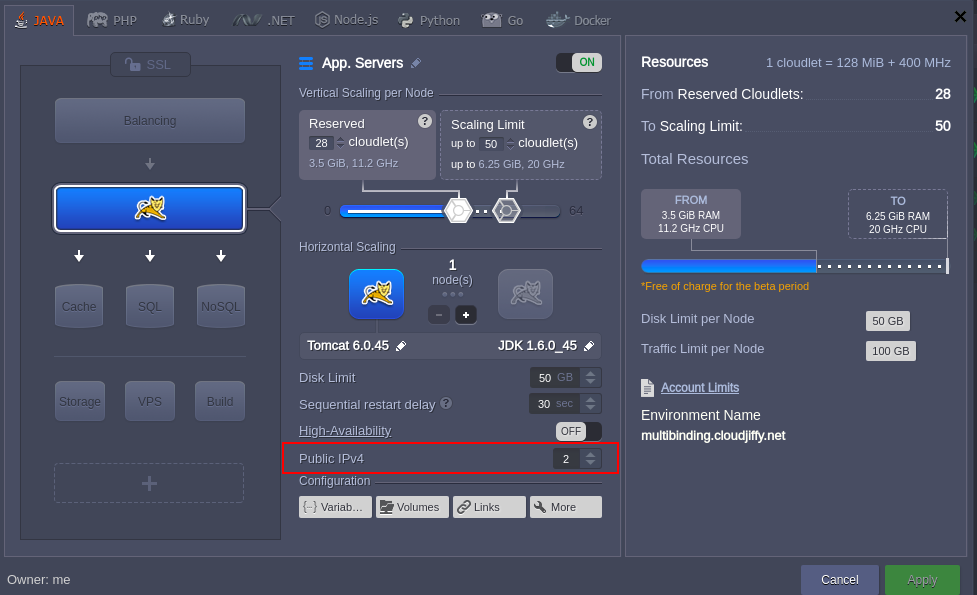
In a minute my environment with Tomcat 6 will be successfully created.

Bind my domain names to the Tomcat's Public IP address, which I can find in the drop-down list for the server. The binding procedure depends on the hosting company, where I bought domains.
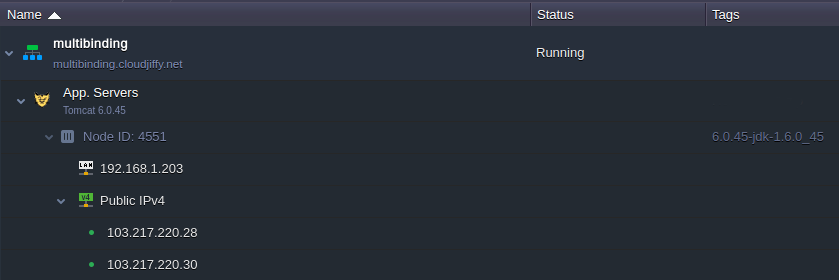
Upload my war files/file to the Deployment manager and deploy them to different contexts.
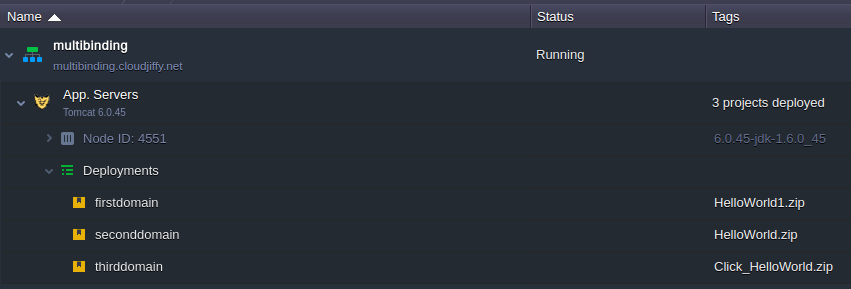
Click on Config button for Tomcat.

Navigate to the server.xml file (server directory) and set the configuration for host multiple domains (add Host tags for each domain I want to host).
For example:
<Hostname="firstdomain.com"appBase="webapps/firstdomain"><Alias>firstdomain.comAlias><Contextpath=""docBase="."/>Host><Hostname="seconddomain.com"appBase="webapps/seconddomain"><Alias>seconddomain.comAlias><Contextpath=""docBase="."/>Host><Hostname="thirddomain.com"appBase="webapps/thirddomain"><Alias>thirddomain.comAlias><Contextpath=""docBase="."/>Host>
...
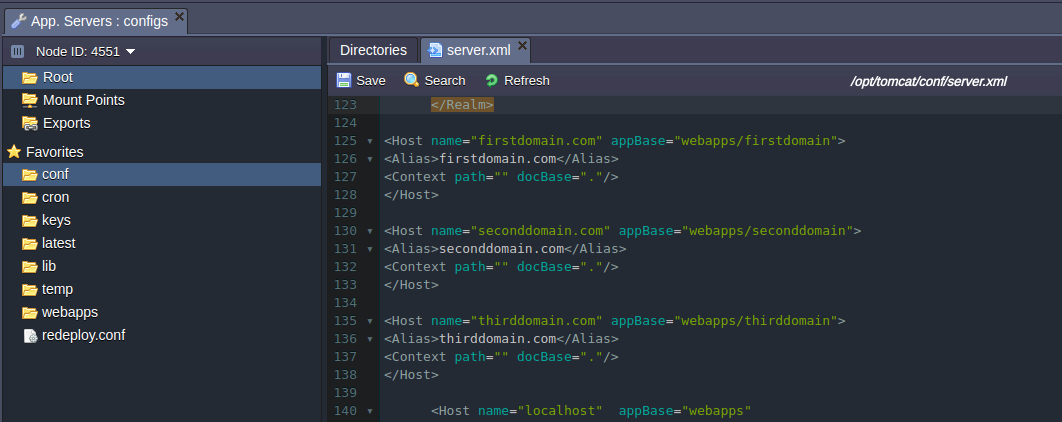
Save the changes and restart Tomcat.
Now I can check the results. My application/s will be available through the specified domain names.
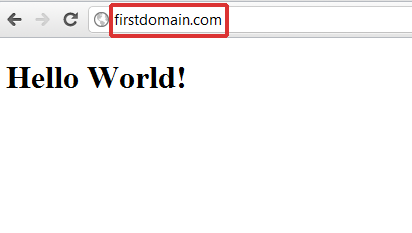
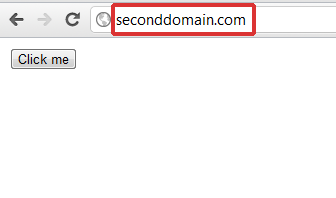
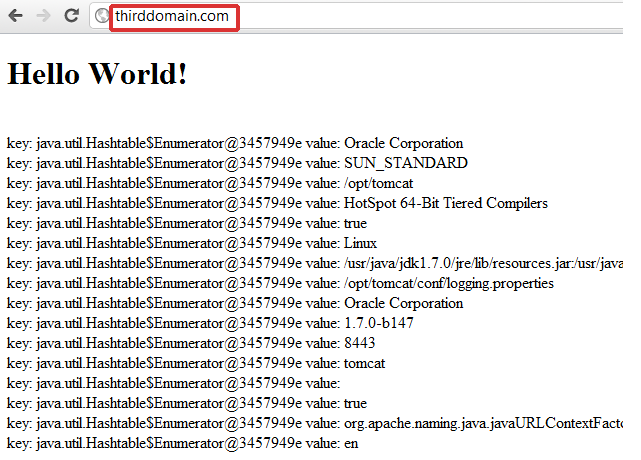
Note: if I want to redeploy an application to the Tomcat instance with already configured server.xml, I need to comment < Host > block before redeploying and uncomment it afterward.